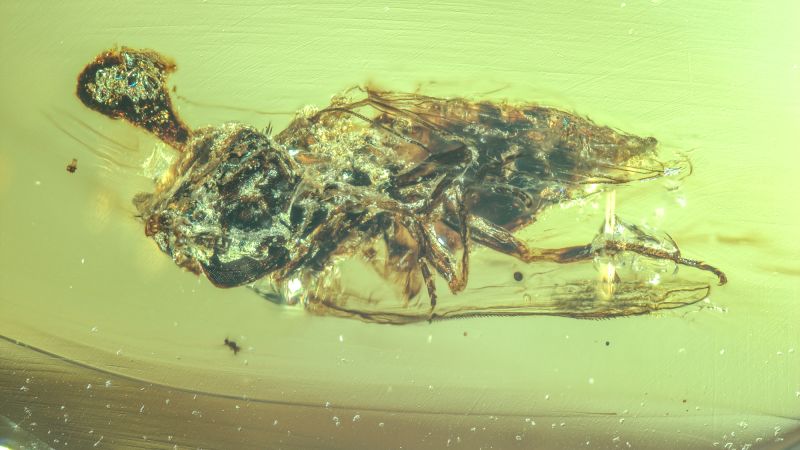Some of the most compelling science fiction narratives often draw inspiration from the bizarre realities of nature. A recent discovery, reminiscent of the parasitic fungi depicted in the popular video game series “The Last of Us,” has emerged from the depths of ancient history. This week, scientists revealed a remarkable find: a 99 million-year-old piece of amber containing a fly overtaken by a parasitic fungus, offering a glimpse into the prehistoric world of insect parasitism.
The amber, which also encases an ant in its pupal stage, was discovered by researchers from the Nanjing Institute of Geology and Palaeontology, part of the Chinese Academy of Sciences. The specimens provide a rare window into the ancient ecosystems where such parasitic interactions were not only possible but perhaps common. Yuhui Zhuang, a doctoral student at the Institute of Paleontology at Yunnan University, remarked on the complexity of these ancient ecosystems, where fungal parasites preyed on insects.
Unveiling Ancient Ecosystems
The discovery of these amber-encased insects is more than just a curiosity; it represents a significant step in understanding the evolutionary history of parasitic fungi. The Ophiocordyceps fungi, known today for their ability to manipulate the behavior of ants, have long fascinated scientists and storytellers alike. The ancient specimens could potentially be the ancestors of these modern-day parasites, providing insight into their evolutionary journey.
According to Zhuang, the fossils could help determine whether these ancient fungi are related to the ones that currently infect carpenter ants. This connection could illuminate the evolutionary adaptations that have allowed these fungi to thrive for millions of years.
Defying Gravity: Parallels in Modern Science
While the ancient world reveals its secrets, contemporary science continues to push boundaries. Recently, Axiom Space Mission 4 launched a private astronaut mission to the International Space Station after delays caused by a persistent air leak. This mission highlights the ongoing challenges and triumphs of space exploration, echoing the persistence seen in the ancient fungal parasites.
The leak, originating from tiny cracks in a tunnel connecting Russia’s Zvezda module to a docking port, had been a concern since 2019. However, its sudden cessation has raised new questions about the station’s integrity. Meanwhile, a joint mission by the European Space Agency and NASA has captured unprecedented footage of the sun’s south pole, potentially unlocking new understanding of space weather’s impact on Earth.
Exploring the Universe and Beyond
In another groundbreaking development, the Vera C. Rubin Observatory has released its first cosmic imagery, showcasing over 2,000 newly detected asteroids and millions of distant galaxies. These initial observations, captured with the largest camera ever built, promise a decade of cinematic views of the universe, offering insights into cosmic phenomena and the dynamic nature of the cosmos.
Similarly, in the depths of the ocean, drone footage has captured orcas in the Salish Sea using kelp as grooming tools. This behavior, termed “allokelping,” may serve dual purposes: exfoliating dead skin and strengthening social bonds, showcasing the intricate social structures within marine life.
Discoveries Across Disciplines
The scientific community continues to unravel the mysteries of our world, from the resilience of “super coral” that may save the Great Barrier Reef to the unearthing of a nearly 1,000-year-old sword in the Netherlands. Each discovery, whether it be fossils of a new dinosaur species in Colorado or the identification of Earth’s oldest rocks in Quebec, adds a piece to the puzzle of our planet’s history.
“These findings not only expand our understanding of the natural world but also inspire future generations to explore and preserve the wonders of our planet,” said Michael Weiss, research director at the Center for Whale Research.
The revelations from both past and present underscore the interconnectedness of life, science, and storytelling. As researchers continue to delve into these ancient and modern mysteries, the narrative of life on Earth becomes ever more intricate and fascinating.
